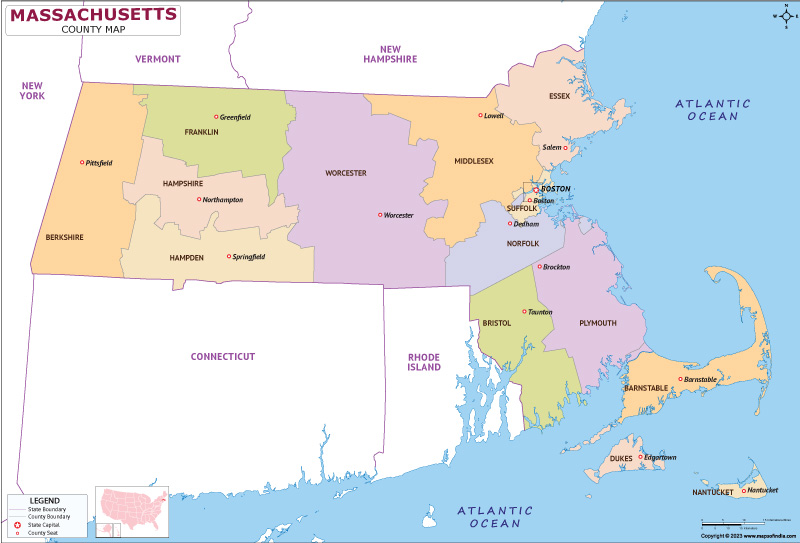The commonwealth state admitted to the union in the year 1788, Massachusetts is the seventh smallest State, with Boston as its capital and the largest city. One of the original 13 states, the State lies in the north-eastern corner of the country, and home to many great Universities such as Harvard and MIT. A good chunk of Boston's population consists of students. With the hybrid of Yankee spirit and vibrance of immigrants that gallivated the streets of the city in the 19th and 20th century, Massachusetts is an amalgamation of culture rich in history and modern ideas.
History
Human life first settled into the state of Massachusetts 12000 years ago. Later, Native American Tribes such as Wampanoag, Mohegan, and Mohican started residing on the land. The English established their first permanent settlement in North America at Plymouth. These settlers were called Pilgrims who arrived at Cape Cod in a ship called Mayflower in the year 1620. A model for civilization in the New World, the settlement was deemed to be an ideal religious society.
Massachusetts had a crucial role in revolutionizing the American War of Independence. With Boston and its vicinity becoming a burgeoning center of commercial and political activities in North America, tensions started to brew between English settlers and Bostonians, which led to a series of landmark events including the Boston Massacre and Boston Tea Party. By the 19th Century, Massachusetts woke up to the dawn of prosperity, after a long period of war. The state economy grew with trading ships, fishing vessels, and whaling fleets. Today the State has one of the most developed economies, a top-ranking public school system, and is home to many prestigious and renowned universities of the world including Harvard, MIT, Boston College, Northeastern University, Boston University.
Culture
Being a highlight center during years of revolution, Massachusetts is also home to many of America's first. Some of them include, the country’s first public high school and elementary school, the country’s first public park, and the country’s first subway system. The state has a pompous and long history of sports culture, being the birthplace of two sports i.e. basketball and volleyball. The State has also been a leading center of art and culture, and American Literature. Home to several renowned orchestras, opera and ballet companies, theater troupes, museums, the State is also the birthplace of many local contemporary bands and artists and art studios.
Language
The State doesn't have any official language, but English is the most spoken language. The urban centers of Springfield and Boston have large Spanish and Portuguese speaking people.
Geography
The New England state shares its borders with New Hampshire and Vermont in the north, the Atlantic Ocean flows through the east, Rhode Island and Connecticut lies in its south, with the City of New York sparkling in the west. Many streams and plains with gentle hills cover the Central State, and the mountains encircle west of the land.
FAQs
Q1: Where does the name of Massachusetts come from?
The name supposedly, draws its derivation from the Massachusetts tribes, which can be translated to "near the great hill".
Q2: Why has the State nicknamed "Bay State"?
This may derive its nickname from the many bays, or from the Massachusetts Bay Company, which was granted the royal charter to colonize the land.
Q3: What is Boston's Freedom Trail?
It is a painted line through the city that leads you to 16 official Revolutionary sites.
Q4: What's an interesting bakery fact about Massachusetts?
Chocolate Chip Cookies were invented in the State.
Last Updated on: July 12, 2023
